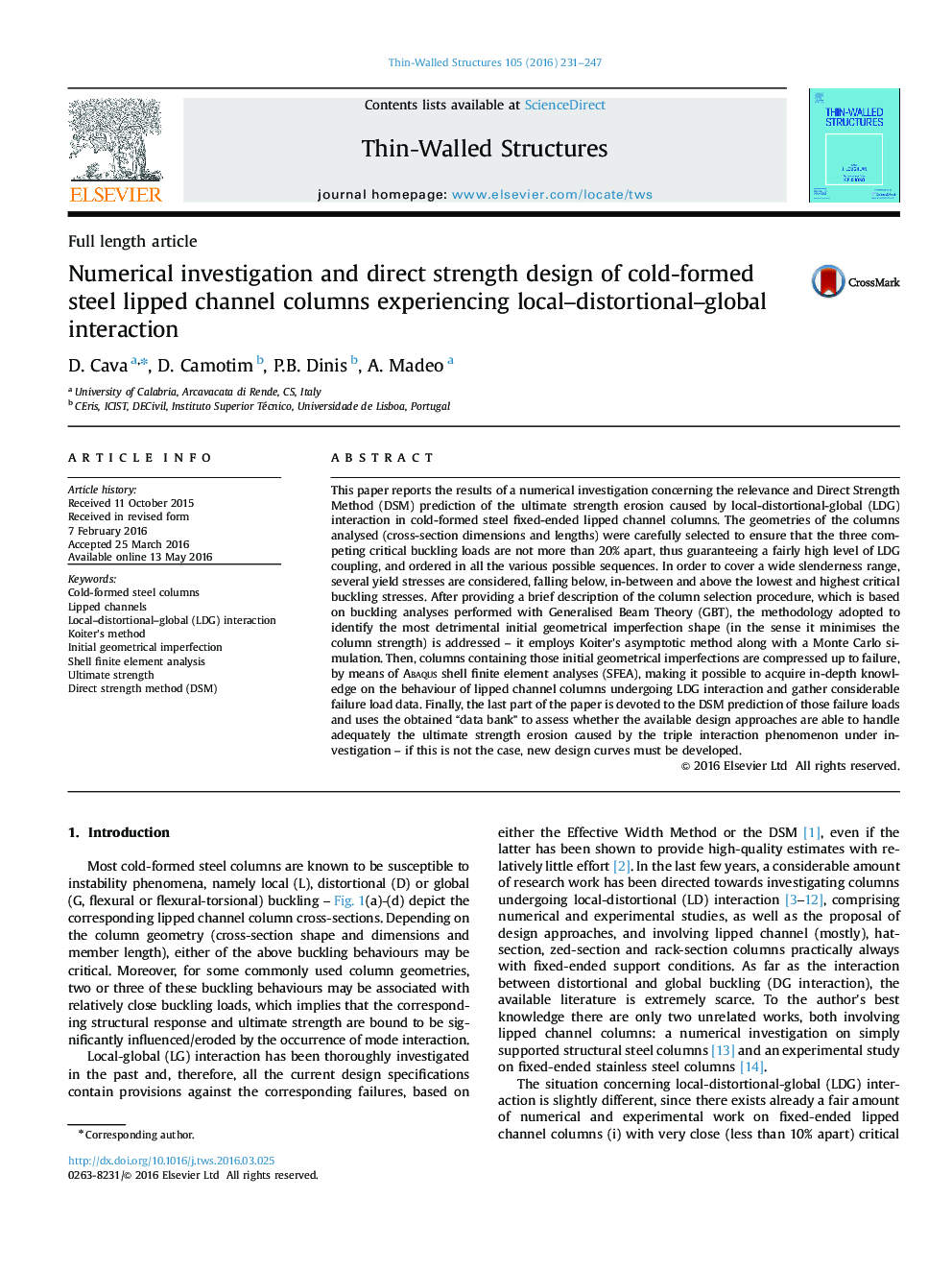| Article ID | Journal | Published Year | Pages | File Type |
|---|---|---|---|---|
| 308308 | Thin-Walled Structures | 2016 | 17 Pages |
•Relevance of LDG interaction in cold-formed steel lipped channel columns is investigated.•Numerical results concerning fixed-ended lipped channel columns presented/discussed.•Most detrimental initial imperfections identified through imperfection-sensitivity analyses.•ABAQUS parametric study carried out to gather extensive (459 columns) failure load data.•Above failure loads are used to assess the merits of DSM design approaches handling LDG interaction.
This paper reports the results of a numerical investigation concerning the relevance and Direct Strength Method (DSM) prediction of the ultimate strength erosion caused by local-distortional-global (LDG) interaction in cold-formed steel fixed-ended lipped channel columns. The geometries of the columns analysed (cross-section dimensions and lengths) were carefully selected to ensure that the three competing critical buckling loads are not more than 20% apart, thus guaranteeing a fairly high level of LDG coupling, and ordered in all the various possible sequences. In order to cover a wide slenderness range, several yield stresses are considered, falling below, in-between and above the lowest and highest critical buckling stresses. After providing a brief description of the column selection procedure, which is based on buckling analyses performed with Generalised Beam Theory (GBT), the methodology adopted to identify the most detrimental initial geometrical imperfection shape (in the sense it minimises the column strength) is addressed – it employs Koiter's asymptotic method along with a Monte Carlo simulation. Then, columns containing those initial geometrical imperfections are compressed up to failure, by means of Abaqus shell finite element analyses (SFEA), making it possible to acquire in-depth knowledge on the behaviour of lipped channel columns undergoing LDG interaction and gather considerable failure load data. Finally, the last part of the paper is devoted to the DSM prediction of those failure loads and uses the obtained “data bank” to assess whether the available design approaches are able to handle adequately the ultimate strength erosion caused by the triple interaction phenomenon under investigation – if this is not the case, new design curves must be developed.
